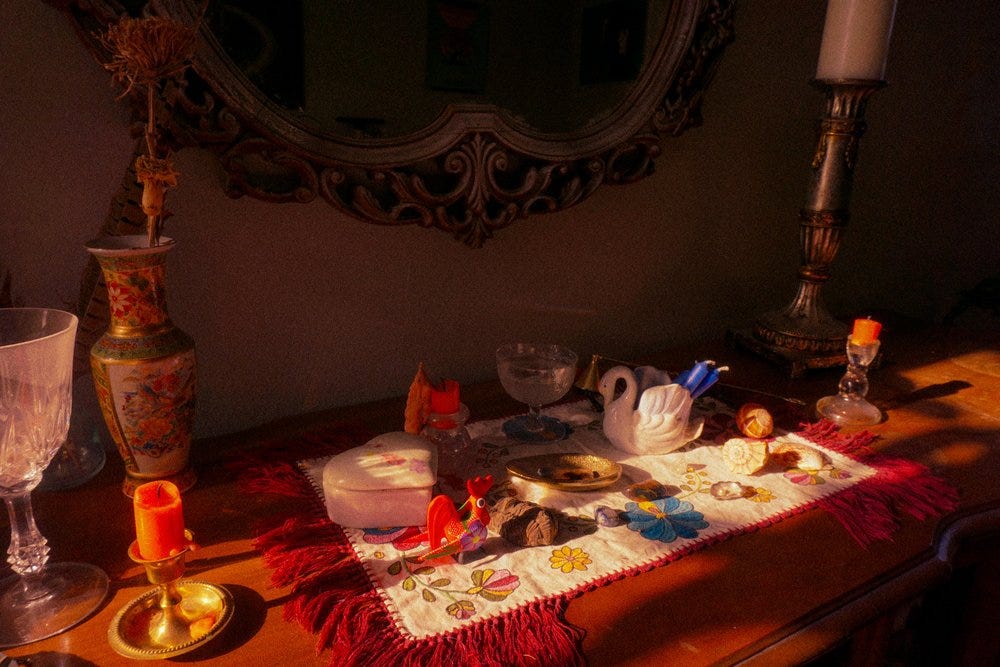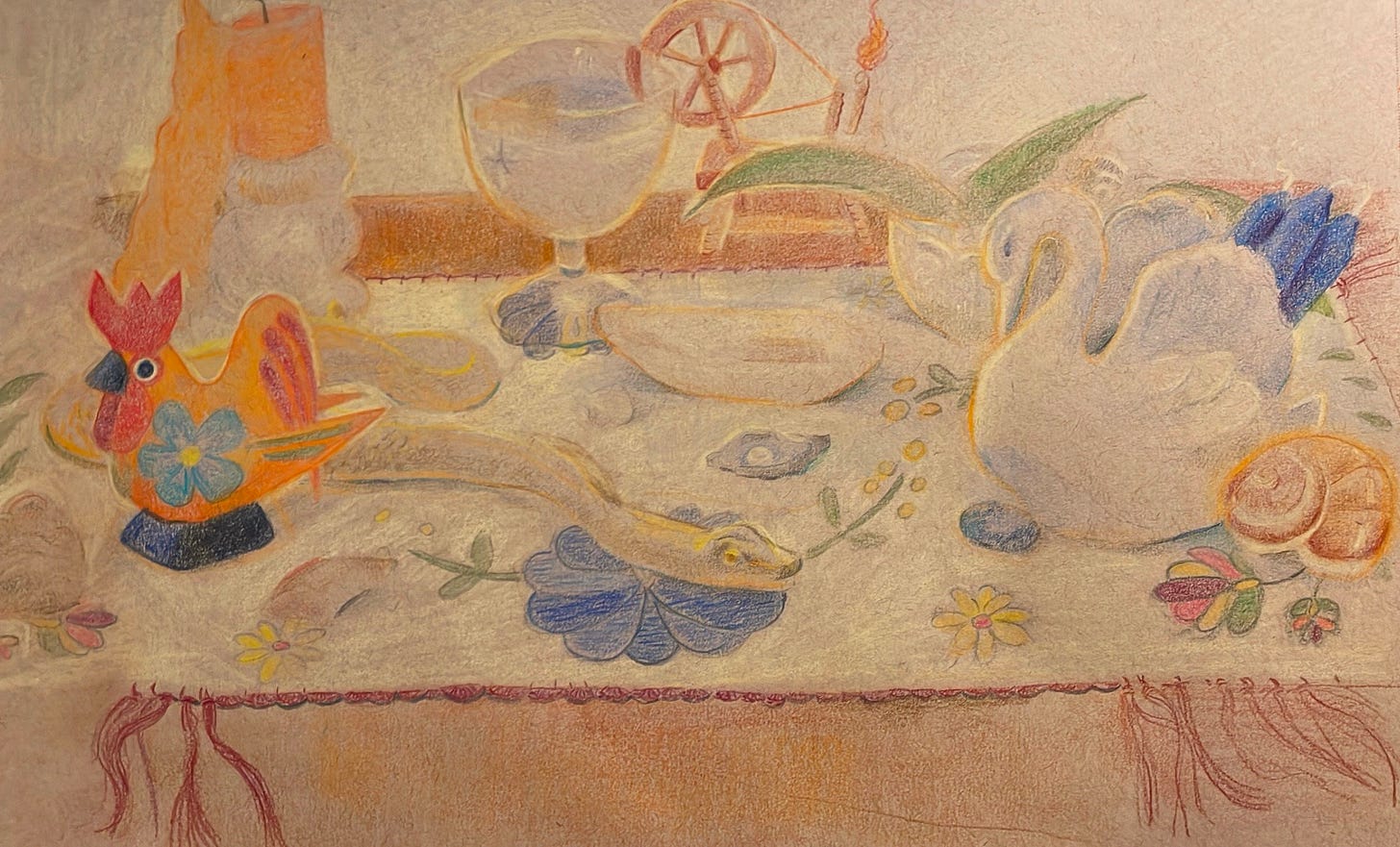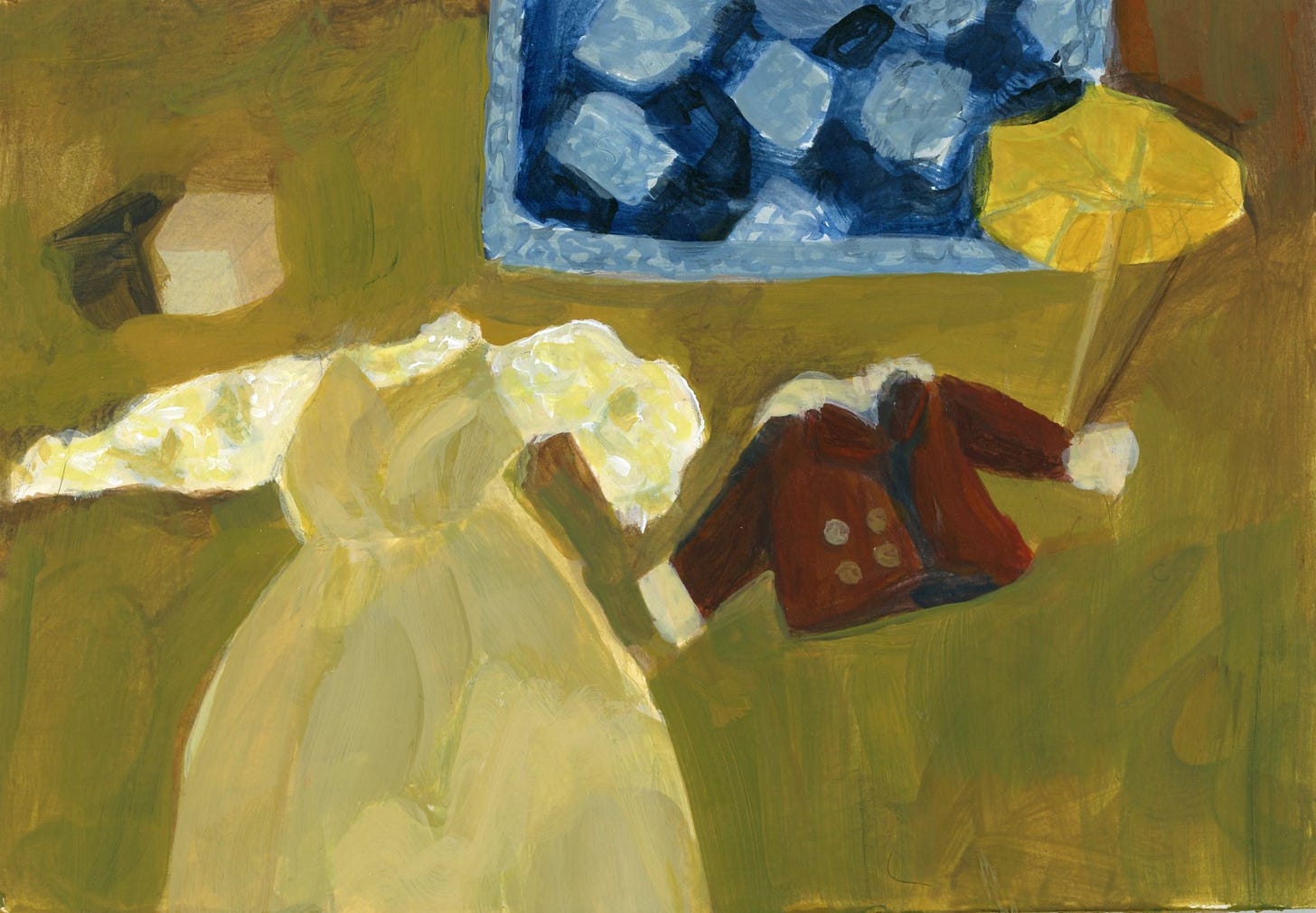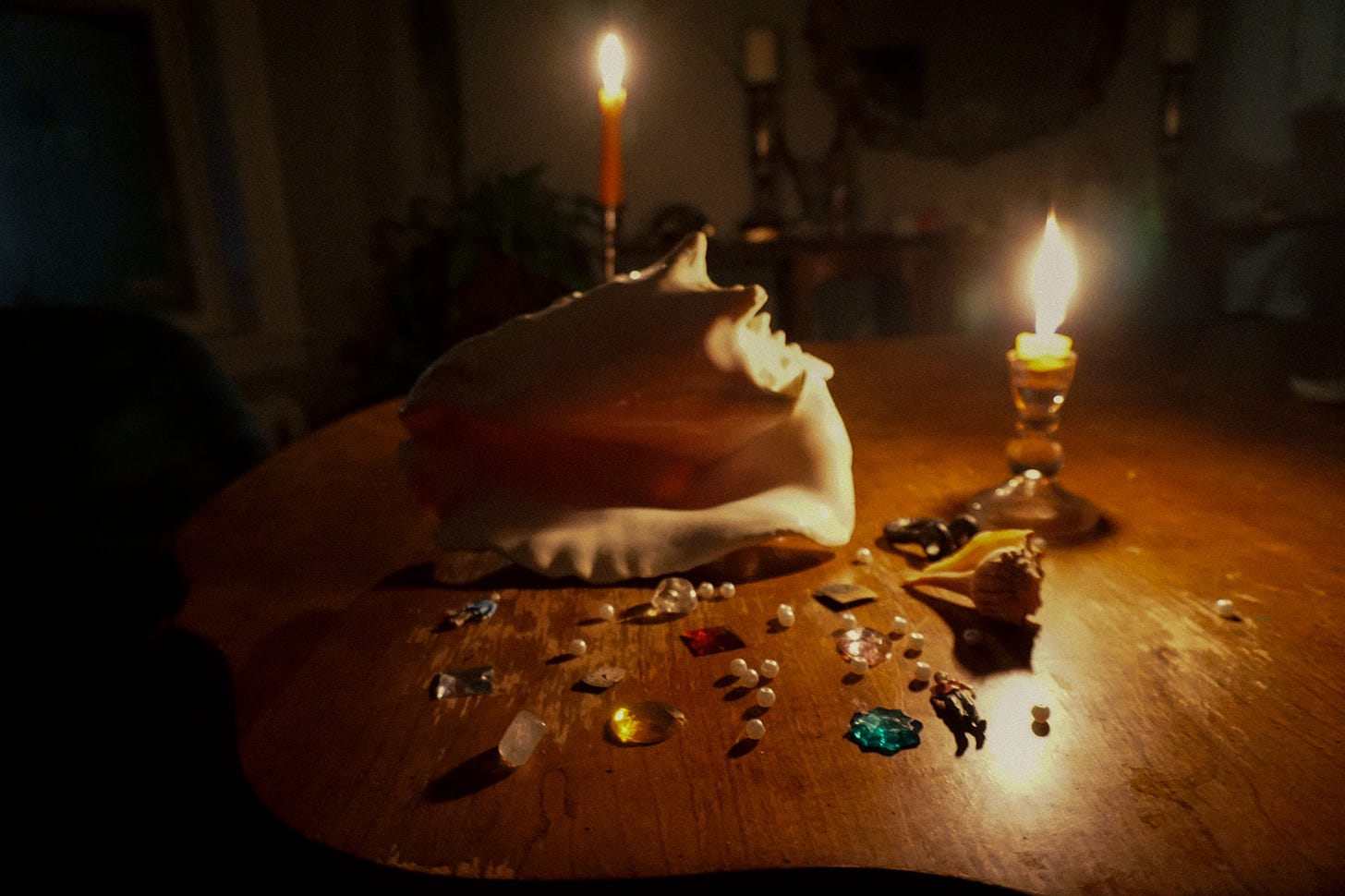This is an installment of The Dollhouse Project—a multidisciplinary, multimedia, collaborative art project that examines the profound impact of homelessness on the human psyche, while exploring the larger cultural and societal forces that erode home as a space of safety, memory, and belonging.
Two years ago, I discovered the dollhouse on the shore of Lake Michigan. It now serves as a vessel in my apartment for reflecting on personal, familial, and global stories of displacement. I want to offer this dollhouse to your own stories—inviting you to contribute, adding your experiences to its evolving narrative.
You have just arrived in your home. Be sure to stomp the snow off of your boots before stepping inside. You place your keys on the table, unpack your bag, say hello to your cat. It’s time to unwind and read an update about The Dollhouse Project—unless you are a dog person, then you are being rushed right back out the door. Please take your time. I’ll still be here when you get back.
You might have just come in with your arms full of groceries, restocking your pantry. Time to water the plants. Take the laundry to the washing machine. Take out the trash. Check the mail. Dice the onion. Mince the garlic. These rituals are interrupted by a constant influx of horrifying headlines transmitted to the device buzzing in your pocket.
You recline on your sofa, scrolling through an unending succession of images that induce a state of paralysis. You see houses engulfed in flames, taken out to sea, and carpet bombed. You see the anguished faces of the people who used to live in these houses. You know that these are avoidable tragedies. You can easily connect the dots on your own about the deliberate mismanagement of resources that led to these events—this I will leave up to you.
All I am asking in this piece is to share in a moment of reflection on your own home. The things inside of it that live in your periphery but go un noticed. What is familiar is always at risk of becoming invisible. What are your rituals of seeing that ground you inside of your life?
You see an email arrive in your inbox—The Dollhouse Project, with the subheading: Mapping American Mythologies in Miniature. How absurd. Why should I care about a dollhouse in the midst of all of this?
I’ll admit that until recently, I couldn’t fully articulate its importance of this dollhouse. I knew it was a neglected thing that would require a lot of care and attention—someone to sand down all its splintering surfaces before a child could touch it. I knew that it resembled a childhood home I’d lost, or old houses I see on walks around my neighborhood that are falling into disrepair—homes that I myself would live to restore and care for if I could ever afford it. At the very least, I can have one of them in miniature.
For two years now this ugly old doll house has sat in the corner of my dining room largely untouched. Many days passed tossing my keys on the table, watering plants, hauling in groceries around it without paying very much attention to it. I’m beginning to understand that I placed this miniature house inside of my larger house so that no house—no matter how small or broken—will go unseen. I am training my eyes to recognize the value and significance of every home. Especially the lost and neglected ones.
With The Dollhouse Project, I invite you into this meditation.
You know that these houses that parade across your screen in flames are lost forever. They will fade from collective memory with the next wave of the news cycle, and you know that each and every one is an entire universe within itself forever lost. How do you hold such an unbearable truth while going about the mundane?
Through such meditations, you might realize how your own home has become invisible to you as you go about the tedium of washing, sweeping, and cooking. Its significance can easily be overlooked, as we are subtly taught not to see it. This is deeply dangerous. If we fail to fully see our homes, we lose sight of their true meaning for others. When we view homes merely as commodities, we miss what they truly are—containers of memory, dreams, and vessels of transformation.
I started this project with a simple prompt to my readership, asking “What’s in the Attic?” I then received in the mail an array of miniature objects my readers associated with attics.
The dollhouse attic now represented any old attic, but in miniature—quite mundane. Here are some clothes and quilts left for the moths to devour. There is a cardboard box forgotten, a watch with its hands stuck. Over there a sewing machine, and an old spinning wheel, are now obsolete. A Screw Pin Anchor Shackle (with missing pin) found on a construction site was the most puzzling of all.
At first I feared that I’d reached a dead end, and that none of these objects were remarkable. I silently admitted defeat for a time. I continued my other creative projects. I eventually pressed on, drawing and painting these objects meditatively for a while until I arrived at an obvious epiphany— in the collective unconscious, and also in reality, attics are largely made up of the same things. And, while these things might not at first seem significant, they are worthy of our stewardship and contemplation. Material culture connects us to the past, and no matter how uncomfortable that past may be, it is important to hold in collective memory.
The attic is also collectively agreed upon as a space that represents memory, obsolescence, and decay. In classic novels like Jane Eyre, and The Picture of Dorian Gray the attic is revealed as a place of concealment and secrecy. I knew that in my family’s attic that there were both the boxes, sewing machines, and moth bitten clothes, but also an Aunt Jemima cookie jar and a well used copy of The Little Black Sambo. Some of these things are useful in the present, while others we are hesitant to even acknowledge.
Suffice it to say that I spent several months in my own metaphorical attic. Through writing, I dusted off and carefully considered each thing in my past that I was hesitant to name and take ownership of. One of these things uncovered was a personal experience with homelessness while working at a homeless shelter. For years, I wouldn’t allow myself to call it by it’s name, as my short inconvenience seemed so benign in comparison to the people I’ve met through my work who’ve lost fingers to frost bite.
This project is meant to be about a more universal story, but for a time the project became bogged down with the particulars of my own story. It was an attempt to build a bridge for myself back into the broader world after a complex and alienating experience that I did not know how to name. From an even broader view, it was an attempt to reveal the real significance of the objects and people that are discarded—all of the people and things that don’t seem to fit within the rigid structure of our society. Even in the dump and under the overpass, these things and people deeply matter and they remain connected to each one of us.
I first had to sit with my own experience and fully see it. I hadn’t realized how much I didn’t notice. I never went hungry. Never slept outside. It was a secret known by few. Yet, even in my brief period I lived it, homelessness fundementally changed the way that I perceived myself within the organization of the world. I began to see myself as small. Through playful imagination with a dollhouse, I learned to see this as a strength rather than a deficit.
I discovered after several months of frustration in trying to move the project forward that becoming small was the barrier to entry. Approaching 30, I resisted lowering myself to that level. I thought of playfulness as frivolous— a waste of time, the most precious resource. However, when I began collecting objects in the attic, I started to see how reducing the scale of a thing somehow reveals its true significance. I began to see play as transformational and deeply important to transformation.
If you plan to proceed with me on this project, you will need to learn to become small yourself—to see yourself as something miniature within the larger universe. At first the inversion of scale will feel overwhelming, however, you will become more attuned to the importance of the tiny things you’ve been trained to overlook.
You will need to come up with your own method, but I will share my own.
This is how I became small:
Every night when I worked at the shelter, I laid out 25 plastic mats across the floor of a room we called the “big room” where everyone slept. When a 26th person came, I wrote their names onto scraps of paper I threw in a bowl for a lottery. I collected lists of names and entered them into a city wide data base of other names. For 4 years I imagined my own name pulled from the lottery or typed into the database. While sleeping in the storage room, I gradually reduced in scale. I interrogated my own sense of self importance. Tried to make sense of the arbitrary nature of my position within the organization of things and people.
Every night in the Big Room, I watched all of the human tragedies and comedies play out. I met many people who could not see themselves as apart of the greater story of human history. Sometimes I still see the same characters wandering around this city, still without a house and subsequently a sense of self or purpose.
I go back to my little home at night and I pick up my copy of the Brothers Grimm’s Fairy Tales. I read about the bakers, the millers, the weavers, and the black smiths, and I know that the erasure of their tools also meant the beginning of the erasure of real people.
Reading about the peasantry of the old world, I realize that the people I know from the shelter are the would-be bakers, millers, weavers, and blacksmiths of today. I see myself in these stories as I learn to sew and craft a little world around me. I write myself into stories. Sew clothes out of old drapes. Create my own mythologies. I know that this is a gift that I am destined to spend my life sharing.
I realize that this is a lot to take in, as you’ve just stepped through your front door at the end of a long and tiring day. I hope these reflections don’t feel like a burden—rather, an invitation to pause and reflect and take stock of what is truly important and what is not.
I hope the realization of your smallness didn’t overwhelm you, but instead offers a gentle reminder that even the smallest things hold significance, that every overlooked space holds a story, and that within those stories, there is strength.







Beautiful musings, thank you. I had a dream recently where all my memories were written on pieces of paper and put inside a small, wooden house. I was able to lift off the roof, select a memory, and time travel back to that specific moment. The objects within our homes may be lost but the memories are always with us. I think that’s what the dream was telling me.
Beautiful and thought provoking. Are you on Bluesky as well? I don’t want your work to get lost in all the Substack I follow. I want to hear more about this.